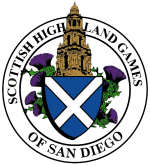Understanding the History Of Scots Gaelic
English was the primary language spoken in Scotland, and the use of the English language in Scotland can be traced back to the 18th century. However, apart from English, there are other languages spoken across Scotland. From the smallest towns to the largest cities in Scotland, different accents can be found. But one of the most important languages that have a link to the history of Scotland is Scots Gaelic. Let’s discuss more about this.
Gaelic Language
Shaped by the vibrant culture and rich history of Scotland, the old Celtic language of Gaelic can be found spoken in different parts of Scotland. This language has been a crucial part of Scottish culture for centuries, and some information says that it is Scotland’s founding language. As per the historical evidence, the origin of this language can be traced back to the 10th century, and some experts claim that it was brought from Ireland to Scotland.
It may be noted that this language has witnessed a massive renaissance and has become quite popular. Even though Islands and the Highlands are the major places of the ancient Gaelic language, people using the Gaelic language are increasing at a higher rate.
Scots Language
Gaelic is a dominant language in the Island and Highlands of Scotland. But Scots language can be found used widely in the Lowlands of Scotland. Different from Gaelic, this language is closer to English in terms of speaking style. Well, debates have raged for years as to whether Scots is a dialect or a separate language. However, the Government of the UK has made it a regional language, and it has been listed under the “European Charter for Regional or Minority Languages.
It may be noted that Scots Gaelic, or you can say Scottish Gaelic is not an official language in the UK. It is considered an Indigenous language.
Understanding the History Of This Language
Considering the available evidence from linguistic geography and traditional medieval records, Gaelic was brought to this country during the 4th to 5th centuries by people from Ireland, who then established Dal Riata, the Gaelic Kingdom. In the year 1018, after the establishment of the Lothians, Gaelic achieved its political, cultural, geographical, and social zenith. Since the eighth century, colloquial speech had started to develop in Scotland.
The region of today’s Scotland was used to call Scotia, and people called Gaelic the Lingua Scotia. During that time, Gaelic was quite prominent in West Lothian, Galloway, and various parts of Western Lothian. The influence of Gaelic was low in the eastern part of Dumfriesshire, the Clyde Valley, and North Ayrshire. There is no evidence to prove whether the language was spoken in the South-Eastern part of Scotland.
The Modern Era
During the 20th century’s last quarter, different organizations and the government started making efforts to encourage the use of the Scottish Gaelic language. As per the data, Gaelic is spoken by more than 60,000 Scots. Endowed with cultural ecology, folklore, and the rich heritage of music, this language is now witnessing a revival. Besides, it has moved over the popular culture and can be heard using at Hebridean ceilidhs and in Lowland pubs.
